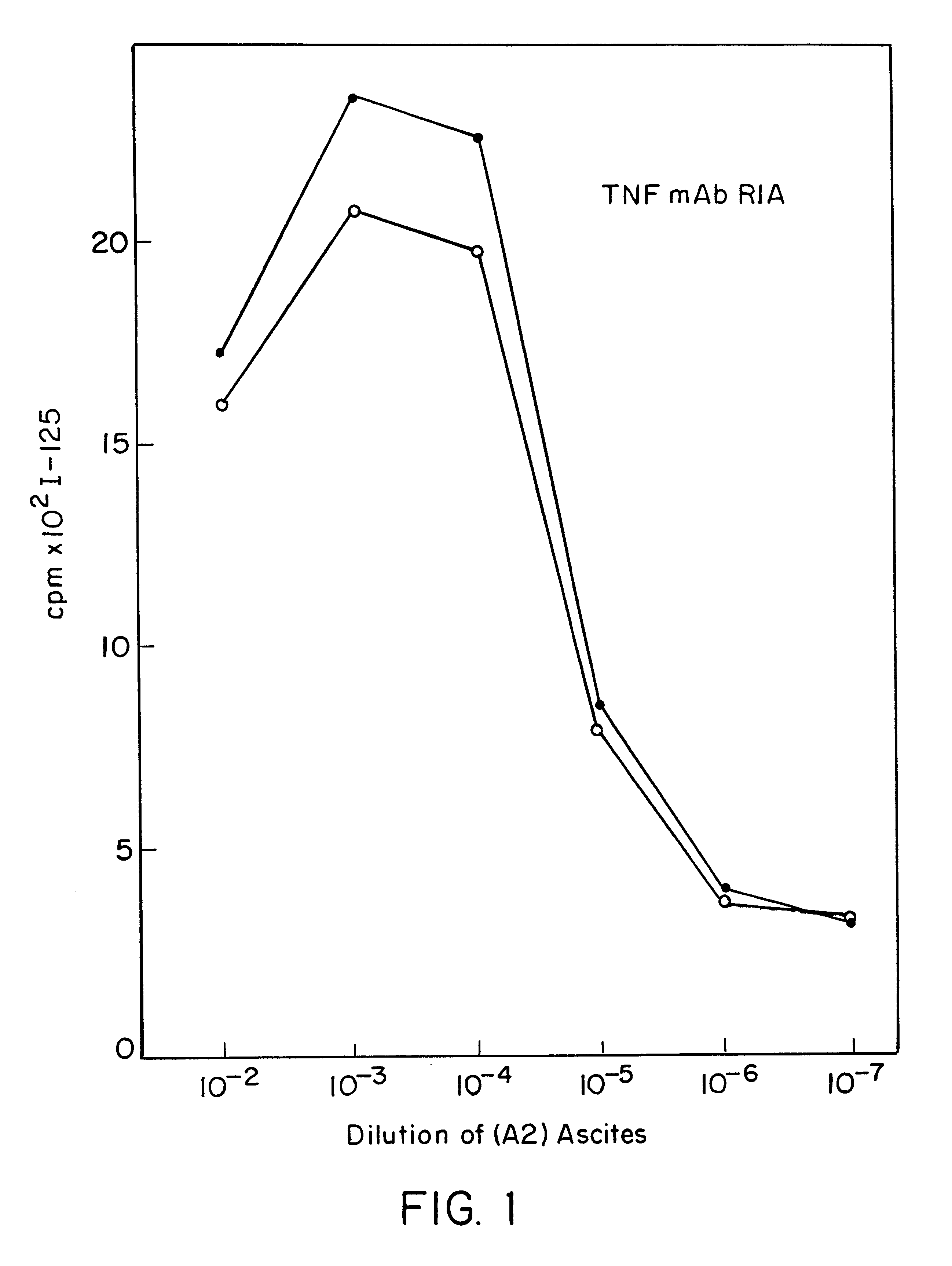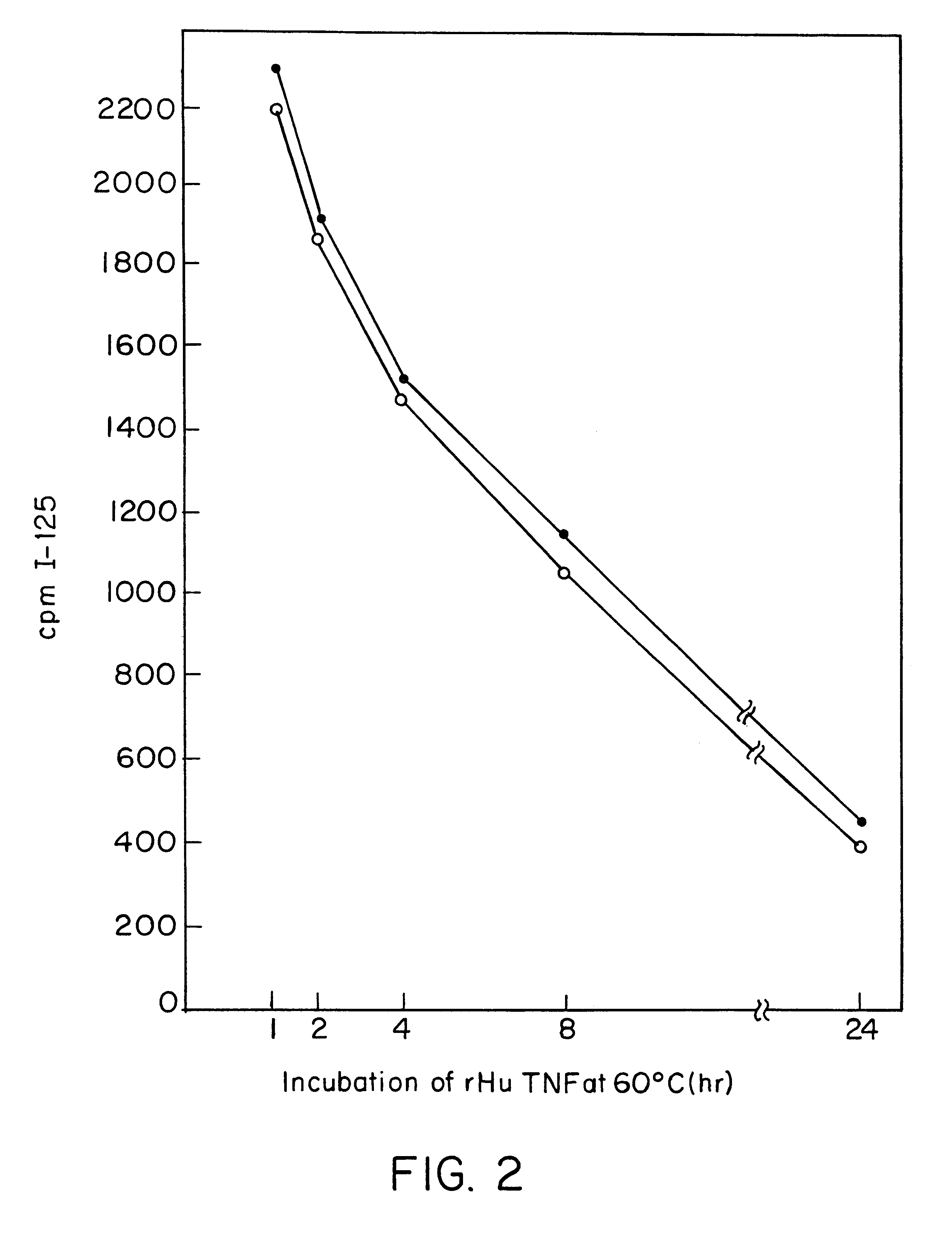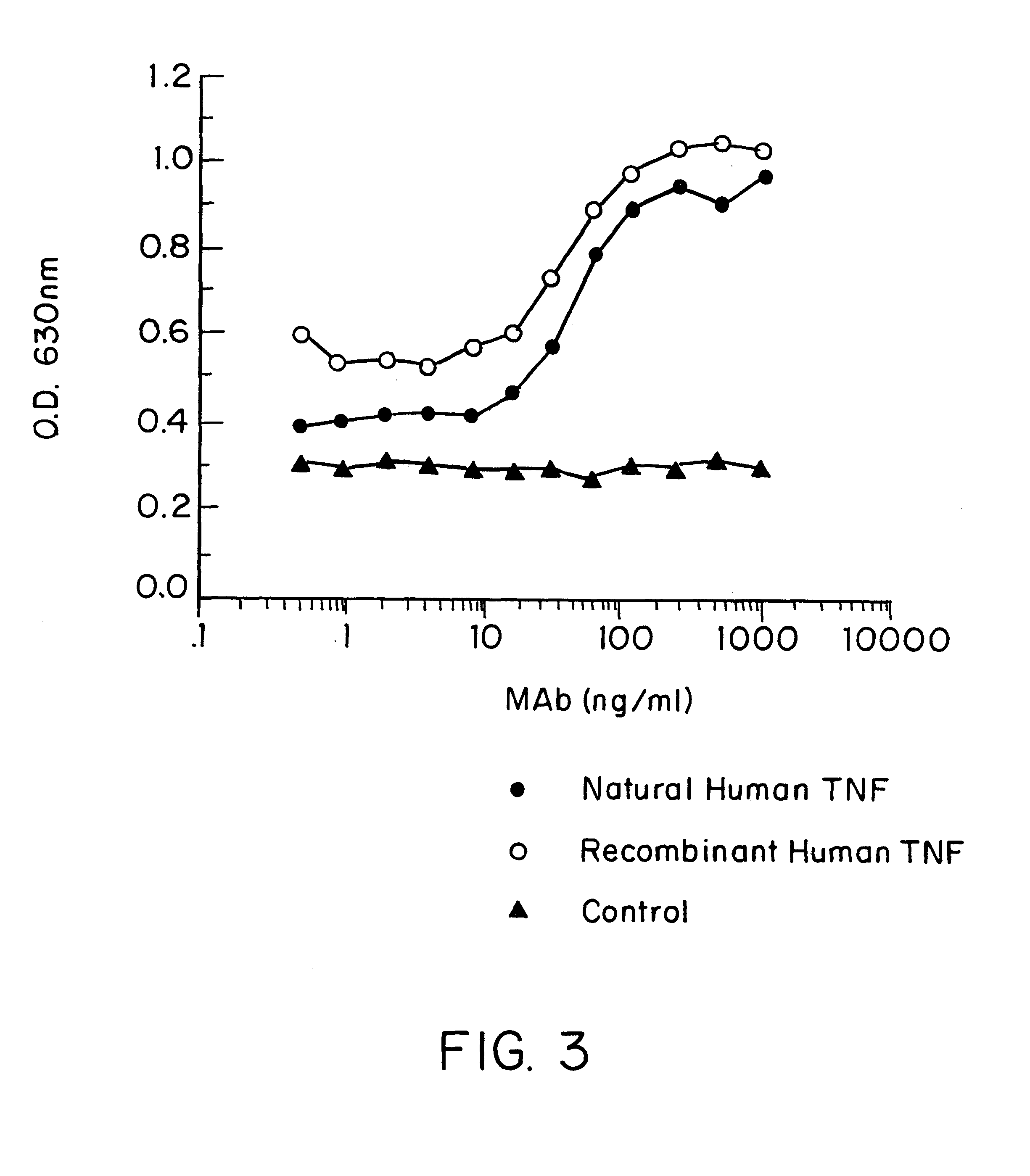Anti-TNF antibodies and peptides of human tumor necrosis factor
a technology anti-tnf antibodies, which is applied in the field of anti-tnf antibodies and peptides of human tumor necrosis factor, can solve the problems of limited human experience with anti-tnf murine mab therapy, decreased effectiveness of continued administration, and inability to provide a basis for producing tnf neutralizing antibodies that can be used in in vivo diagnostic or therapeutic purposes
- Summary
- Abstract
- Description
- Claims
- Application Information
AI Technical Summary
Problems solved by technology
Method used
Image
Examples
example ii
Characterization of an Anti-TNF Antibody of the Present Invention
Radioimmunoassays
E. coli-derived rhTNF was diluted to 1 .mu.g / ml in BCB buffer, pH 9.6, and 0.1 ml of the solution was added to each assay well. After incubation at 4.degree. C. overnight, the wells were washed briefly with BCB, then sealed with 1% bovine incubated with 40 pg / ml of natural (GENZYME, Boston, Mass.) or recombinant (SUNTORY, Osaka, Japan) human TNF.alpha. with varying concentrations of mAb A2 in the presence of 20 .mu.g / ml cycloheximide at 39.degree. C. overnight. Controls included medium alone or medium+TNF in each well. Cell death was measured by staining with naphthol blue-black, and the results read spectrophotometrically at 630 nm. Absorbance at this wave length correlates with the number of live cells present.
It was found that A2 inhibited or neutralized the cytotoxic effect of both natural and rhTNF in a dose-dependent manner (FIG. 3).
In another experiment, the specificity of this inhibiting and / or...
example iii
General Strategy for Cloning Antibody V and C Genes
The strategy for cloning the V regions for the H and L chain genes from the hybridoma A2, which secretes the anti-TNF antibody described above, was based upon the linkage in the genome between the V region and the corresponding J (joining) region for functionally rearranged (and expressed) Ig genes. J region DNA probes can be used to screen genomic libraries to isolate DNA linked to the J regions. Although DNA in the germline configuration (i.e., unrearranged) would also hybridize to J probes, this DNA would not be linked to a Ig V region sequence and can be identified by restriction enzyme analysis of the isolated clones.
The cloning utilized herein was to isolate V regions from rearranged H and L chain genes using J.sub.H and J.sub.k probes. These clones were tested to see if their sequences were expressed in the A2 hybridoma by Northern analysis. Those clones that contained expressed sequence were cloned into expression vectors co...
example iv
Construction of a L Chain Genomic Library
To isolate the L chain V region gene from the A2 hybridoma, a size-selected genomic library was constructed using the phage lambda vector charon 27. High molecular weight DNA was isolated from A2 hybridoma cells and digested to completion with restriction endonuclease HindIII. The DNA was then fractionated on a 0.8% agarose gel and the DNA fragments of three different size ranges of approximately 3 kb, 4 kb and 6 kb were isolated from the gel by electroelution. The size ranges for library construction were chosen based upon the size of Hind III fragments that hybridized on a southern blot with the J.sub.k probe. After phenol / chloroform extraction and ethanol precipitation, the DNA fragments from each size class were ligated with lambda charon 27 arms and packaged into phage particles in vitro using Gigapack Gold from Stratagene (LaJolla, Calif.).
These libraries were screened directly at a density of approximately 20,000 plaques per 150 mm pet...
PUM
| Property | Measurement | Unit |
|---|---|---|
| molecular weight | aaaaa | aaaaa |
| time | aaaaa | aaaaa |
| concentrations | aaaaa | aaaaa |
Abstract
Description
Claims
Application Information
 Login to View More
Login to View More - R&D
- Intellectual Property
- Life Sciences
- Materials
- Tech Scout
- Unparalleled Data Quality
- Higher Quality Content
- 60% Fewer Hallucinations
Browse by: Latest US Patents, China's latest patents, Technical Efficacy Thesaurus, Application Domain, Technology Topic, Popular Technical Reports.
© 2025 PatSnap. All rights reserved.Legal|Privacy policy|Modern Slavery Act Transparency Statement|Sitemap|About US| Contact US: help@patsnap.com



